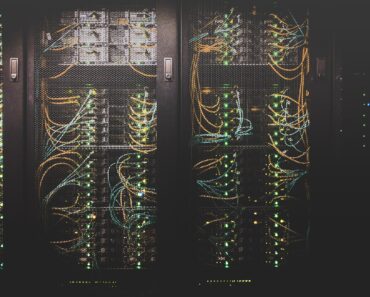Introduction:
In recent years, technological advancements have propelled us into a new era of computing, where the boundaries between the physical and digital worlds are becoming increasingly blurred. One of the key technologies driving this convergence is spatial computing. Spatial computing refers to the integration of virtual and augmented reality (VR/AR), computer vision, and other related technologies to create immersive and interactive experiences that leverage our spatial understanding of the world. In this article, we will explore the concept of spatial computing, its applications across various industries, and its potential to reshape our daily lives.
Understanding Spatial Computing:
At its core, spatial computing is centered around the idea of mapping digital information onto physical space, enabling users to interact with digital content in a more natural and intuitive way. By combining VR/AR technologies with computer vision and sensing capabilities, spatial computing systems can perceive and understand the physical environment and seamlessly integrate virtual objects into it. This convergence of technologies allows for the creation of immersive environments that respond to users’ movements, gestures, and interactions.
Key Components of Spatial Computing:
- Virtual Reality (VR): VR immerses users in a computer-generated environment, simulating a completely virtual world. Users typically wear a head-mounted display (HMD) that tracks their head movements, providing a sense of presence and enabling them to interact with the virtual environment.
- Augmented Reality (AR): AR overlays digital content onto the real world, enhancing the user’s perception of reality. AR devices, such as smartphones or smart glasses, use cameras and sensors to detect the user’s surroundings and project relevant information or virtual objects into their field of view.
- Computer Vision: Computer vision is a branch of artificial intelligence that enables computers to understand and interpret visual information. By using cameras and image processing algorithms, spatial computing systems can recognize and track objects, detect gestures and movements, and map the physical environment.
Applications of Spatial Computing:
- Gaming and Entertainment: Spatial computing has revolutionized the gaming and entertainment industries by providing immersive experiences. With VR, players can step into virtual worlds and interact with their surroundings, creating a heightened sense of realism. AR, on the other hand, has brought games and digital characters into the real world, enabling users to engage with them in their own environments.
- Education and Training: Spatial computing has the potential to transform education and training by offering interactive and immersive learning experiences. Students can explore historical sites, conduct virtual experiments, or interact with virtual objects to gain a deeper understanding of complex concepts. In fields like medicine or aviation, trainees can practice procedures and simulations in realistic virtual environments, improving their skills and reducing risks.
- Architecture and Design: Spatial computing is making waves in architecture and design by allowing professionals to visualize and experience their creations before they are built. With VR, architects can walk through virtual buildings, assessing spatial layouts and making design decisions. AR enables designers to overlay virtual furniture or decorations onto physical spaces, helping clients visualize and customize their environments.
- Healthcare: Spatial computing has found applications in healthcare, from assisting in surgeries to improving patient experiences. Surgeons can utilize AR overlays to project patient information, X-ray images, or real-time guidance during procedures, enhancing precision and reducing risks. VR is also being used for pain management, distraction therapy, and mental health treatments.
- Industrial and Manufacturing: Spatial computing is being leveraged in industrial and manufacturing settings to enhance productivity and safety. AR can provide real-time instructions and guidance to workers, reducing errors and improving efficiency. VR-based simulations enable training in hazardous or complex scenarios, ensuring workers are prepared without exposing them to actual risks.
Future Implications of Spatial Computing:
As spatial computing continues to evolve, it holds the potential to reshape various aspects of our daily lives. From retail and advertising to communication and collaboration, the integration of virtual and physical worlds can enhance experiences and revolutionize industries. Spatial computing can enable seamless telepresence, where users feel as though they are physically present in different locations, revolutionizing remote work and reducing travel requirements. Furthermore, the technology can contribute to the development of autonomous vehicles, smart cities, and advanced robotics by improving their perception and interaction capabilities.
Challenges and Considerations:
While spatial computing offers exciting opportunities, several challenges need to be addressed. Privacy concerns, ethical considerations, and the need for robust data security are crucial aspects that must be prioritized. Additionally, issues related to motion sickness in VR experiences, the cost of hardware, and the accessibility of technology need to be addressed to ensure widespread adoption and inclusivity.
Conclusion:
Spatial computing is ushering in a new era of computing that seamlessly blends the physical and digital worlds. By leveraging VR, AR, computer vision, and other related technologies, spatial computing enables immersive, interactive, and intuitive experiences across various industries. From gaming and entertainment to education, healthcare, and beyond, the applications of spatial computing are vast and transformative. As this technology continues to evolve, it has the potential to reshape our daily lives, enhance productivity, and foster new ways of communication and collaboration. With careful consideration of challenges and responsible implementation, spatial computing can unlock a world where the boundaries between the physical and digital realms become indistinguishable.






